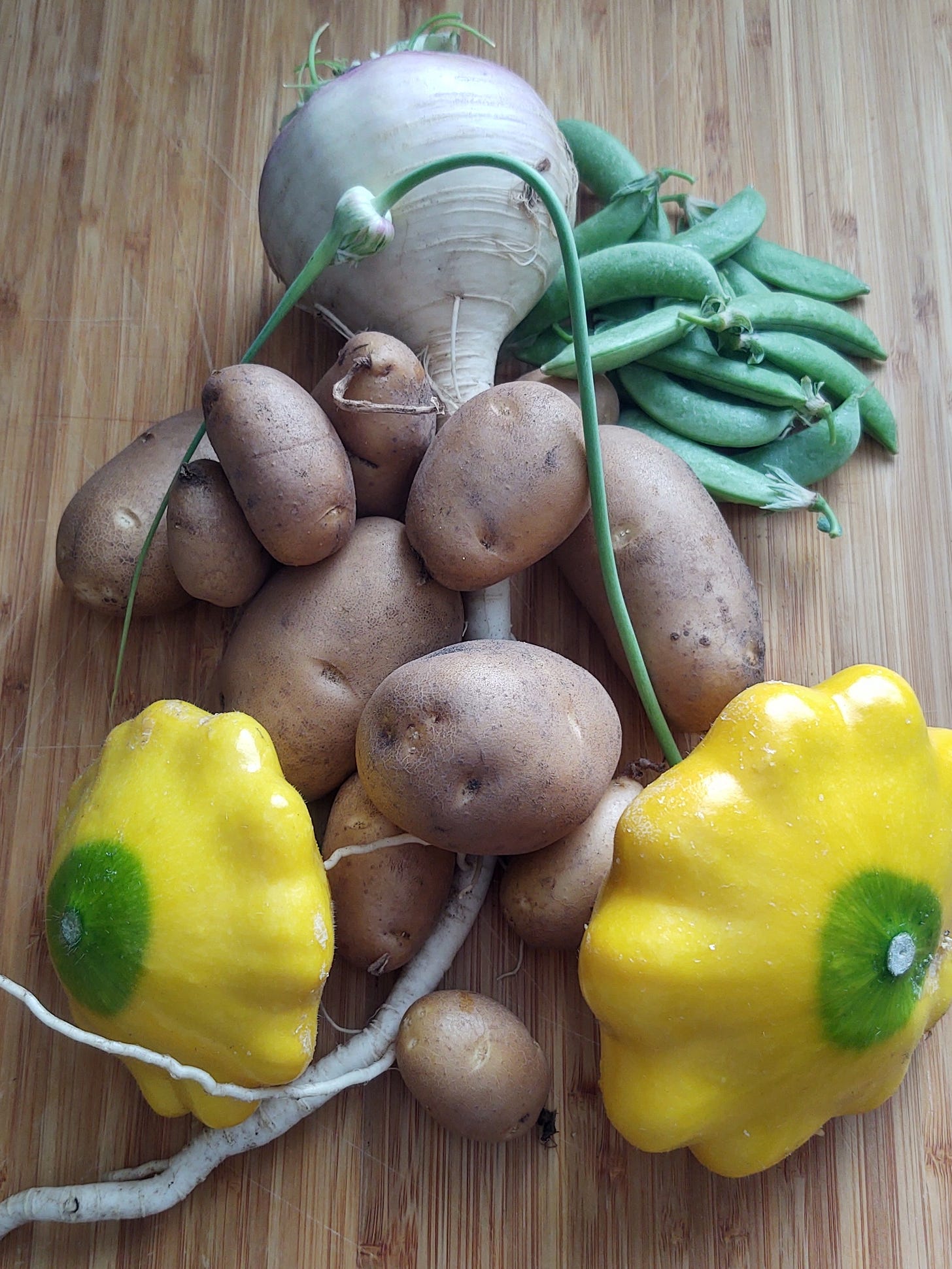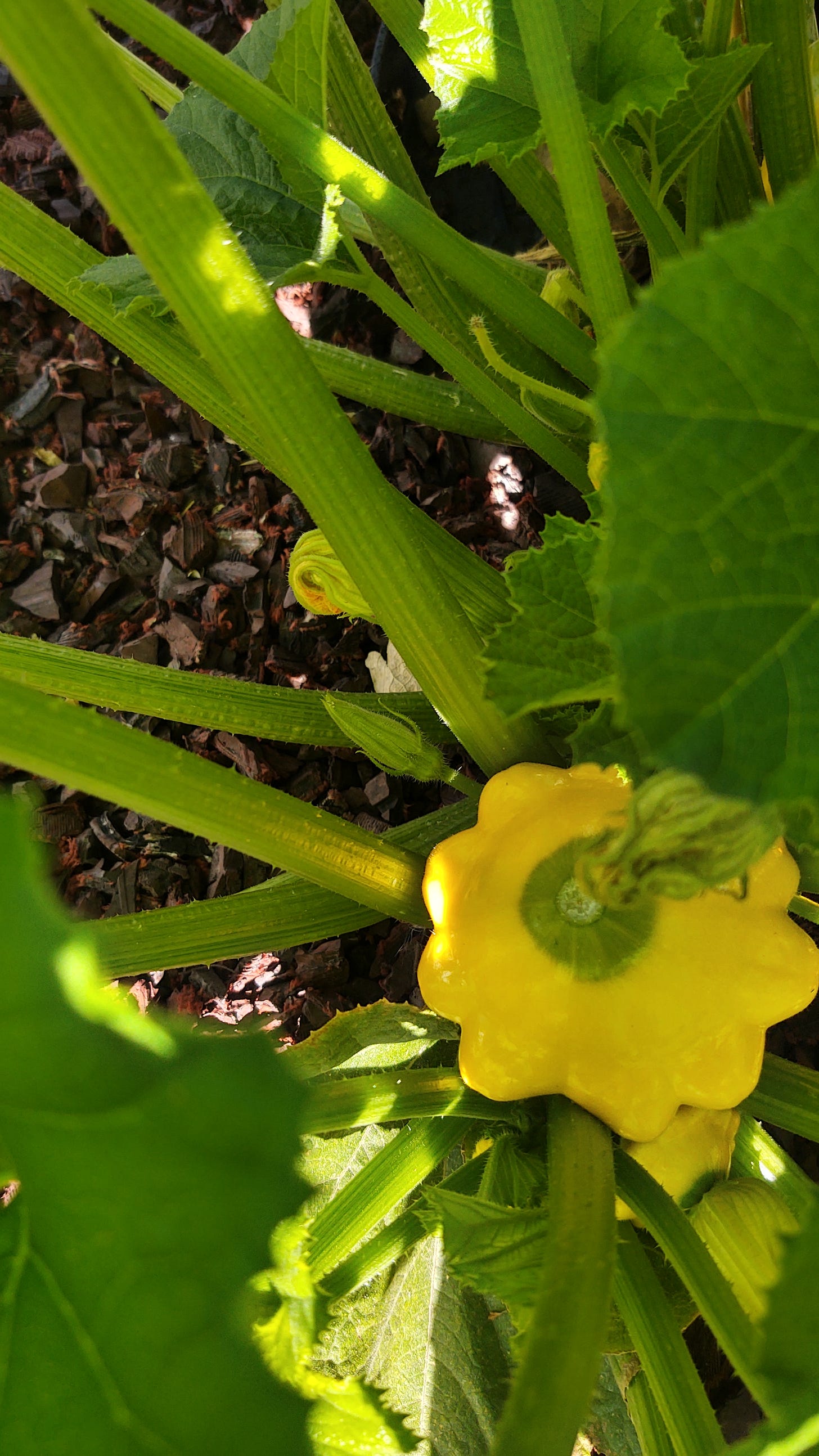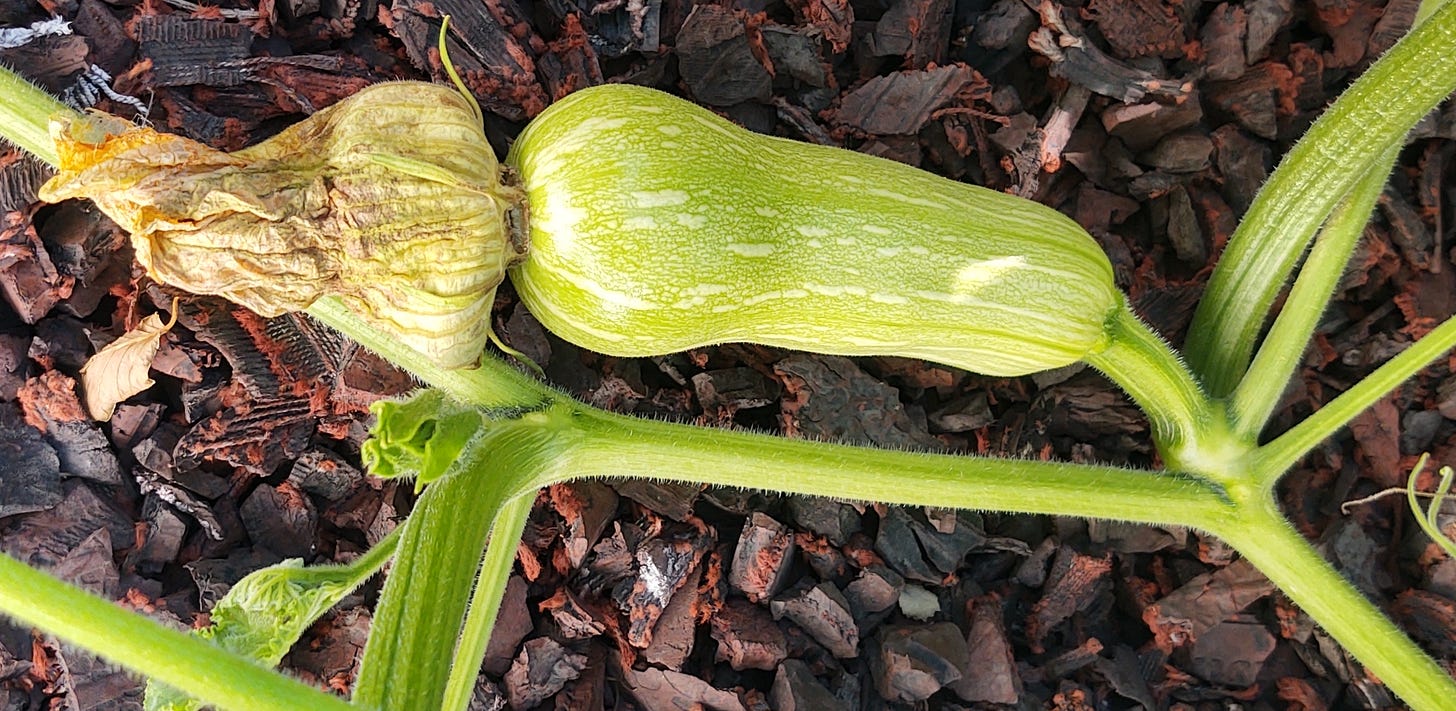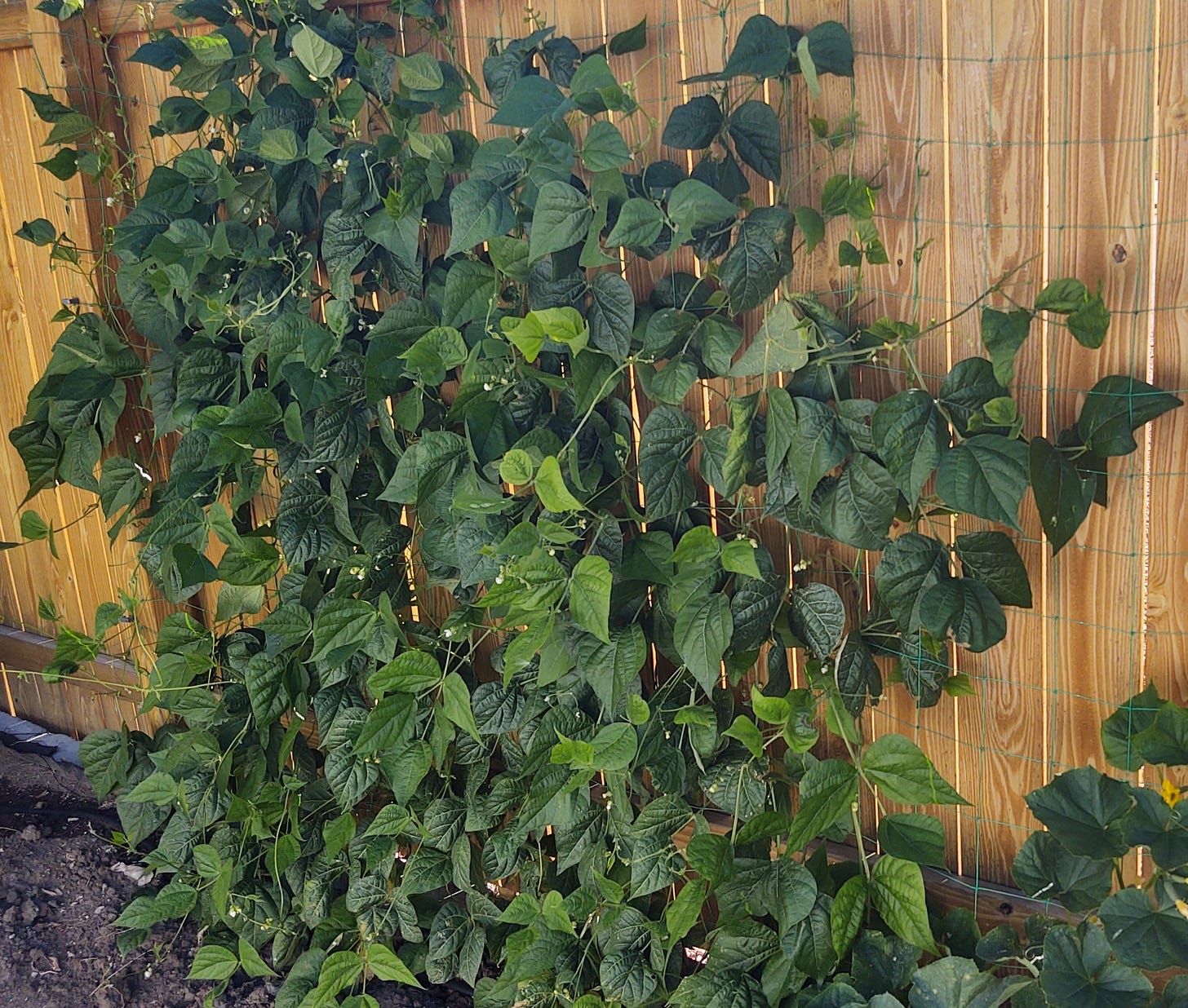Man, how time flies! It seems like it was years ago that I did my best to write:
That was February when, in our area here, there was still snow on the ground and temps were still plummeting to sub zero at night. Our growing season here is only about 3 months. Luckily, I grew up in this climate and I’m fortunate to have been taught the skills to grow food (and preserve it) in an area like this.
So anyway, I rant about *everything* as most of you know. I don’t claim to know a lot about anything, but I know a little bit about almost everything. Haha. I’m not being arrogant when I say that. It’s just a fact. It’s who I am. I’ve never limited myself to doing just one thing and my curiosity about how things work has always had me choosing independence over dependence whenever and wherever I can. I wanted to share with my readers in this very rare extra post, some of the things I grow for us to eat during the summer and throughout the winter. (When crops do well. Sometimes… well, we are at the mercy of nature). These pictures might not look like much, but I assure you, things are ripening. It’s just starting. What happens this time of year here is a few things ripen and then *everything* ripens all at once. It’s a very busy time for a few weeks starting now until the end of August (or if we are lucky, the first couple weeks into September) when we get our first frost, and many times, our first hard freeze.
We have a 28’ X 12’ garden plot on a very small lot here. We don’t have regulations on collecting rain water. We can grow whatever we want in our front yard, back yard, side yard and, yes, even on town property along our lots (as long as we take care of it). So, we grow main items in the garden plot and “extras” we stick in wherever we can. I hope you enjoy seeing some of these pictures of the beginning of our 2022 “harvest”.
This was our first foray into some of the later vegetables a couple of weeks ago. A crazy turnip with the longest root I’ve ever seen. Some early potatoes (which are so amazingly good), a handful of sugar snap peas, and a new one for us this year; Patty Pan squash. To give people an idea of what this costs to buy at the store in an area where food has to be imported: This is about 15$ worth of food that cost approximately 1$ to 2$ to grow. (Fresh vegetables average about 5$ a pound here).
Our “celery forest”. This is 6 celery plants. Homegrown celery is *amazing*. There’s no comparison to store bought. No pests bother it in our area and you can pick a few stalks throughout the summer. Once we are forced to harvest because of the weather we save one bunch that will keep for a month (sometimes two) in the refrigerator and we make a giant batch of celery soup we can either eat or use in other things throughout the winter. Celery is typically almost 4 dollars a bunch here. We grew this for pennies.
Spahgetti Squash hiding among the leaves. Again… pennies to grow. It looks like we will only get 3 or 4 of these this year off of one plant (they weren’t in a very good spot), but at our store here, these babies cost almost 5 dollars a pound, even when they are in season. They will keep a couple of months without refrigeration.
Patty Pan squash. We used to grow Zucchini, but zucchini are almost too much to handle (they are very prolific and produce more than we can eat and/or preserve). Patty pan is a great alternative in my opinion. They are also prolific, but they don’t get 2 feet long over night like zucchini squash does! Eat raw or cooked and can blanch and freeze and/or deyhdrate to throw in soups in the winter (we do both).
This is a baby butternut squash. Unfortunately, I don’t think it will mature in time unless we have a longer summer than usual. Butternut squash is what is called a “winter squash.” They will keep for months kept in a cool dry place in the winter.
I’ve been calling these our “Charlie Brown” cucumber plants. Haha. They are producing like crazy, but they look a bit spindly. We make dill pickles and use them fresh in salads.
Our pole bean “patch”. They are *not* happy here and we won’t make that mistake again. They should be loaded with green beans, but they are not producing worth a darn. In years when they do well, we have fresh green beans and “dilly” beans (pickled green beans). I’m not holding out much hope for either this year.
We have corn and potatoes at the back of the garden plot this year. The corn did okay there, but I will revamp next year. There are 30 plants there and that would typically give a person approximately 60 ears of corn. I’m thinking we’ll get about 40 ears. We will eat some fresh and freeze some (cut off the cob) for winter munching.
Just picked today! Two more patty pan squash, a “test” ear of corn (they need a couple more days), more cucumbers, the first “ripening” tomato and a small garlic!
Homegrown Romaine lettuce we will have tonight. Lettuce of all types is extremely easy to grow. Homegrown has nutrients that storebought does *not* have. It costs pennies to grow and if you let them go to seed you never have to buy lettuce seeds again. It has a much bolder flavor than what you get at the store and more “crunch”. The problem with lettuce is it requires cool weather to grow, so we’re lucky to have this at this time of year. We plant a crop in the early spring and in late summer.
A patch of dill we usually let grow wild by the side door. It smells incredible, bees love it and we use it for pickles, in salads and we collect seeds to use in things during the winter. Growing dill is almost “free”. It doesn’t take much water and will reseed itself every year. People with a patch of soil should *never* be buying expensive dill at the grocery store.
One of six cabbages we have growing. We use diatomaceous earth to keep cabbage moths from laying their eggs. The caterpillers can destroy a head of cabbage almost overnight if left unchecked. They also prefer cool weather.
I could keep going. There’s other things like peppers and tomatoes, parsley and things we have stuck in here and there, but I’m being told my email is getting too long. Haha. Sorry about that. (It must be the pictures).
I just want people to know that what I talk about in my posts… I actually *do* (or try to my best to do). You can too! We must be serious about getting off of the systems that only serve to destroy us, enslave us, or negatively impact our health and wellbeing. One thing every one of us can do is grow some of our own food. No matter where we are. It’s challenging and sometimes we fail, but when we are successful the reward is well worth the effort.
I hope you enjoyed this bonus post of The Rumble Strip. I care very much about all of my readers and want to help be part of the solution whenever I can. Talking about and showing what I do is the way I try and do that. We can overcome the oppression that is being placed upon us by the elitists. Helping each other, sharing our passion for liberty and our solutions is imperative and we are so fortunate to have a platform where we can do exactly that. Until Monday next week, unless I die peacefully in my sleep, have an excellent week. And stay positive! There is a harvest on the horizon.















Excellent post, Rob. I started gardening in April 2020. I'm nowhere near as good as you, but every season gets better. My big experiment this year will be winter kale. I live in NC, so I think it's doable.
I'm sick of talk. It's time for action. Taking control of our food supply is the logical first step.
Harvested some celery here mid-winter a week ago. I like juicing it up with pears or apples.